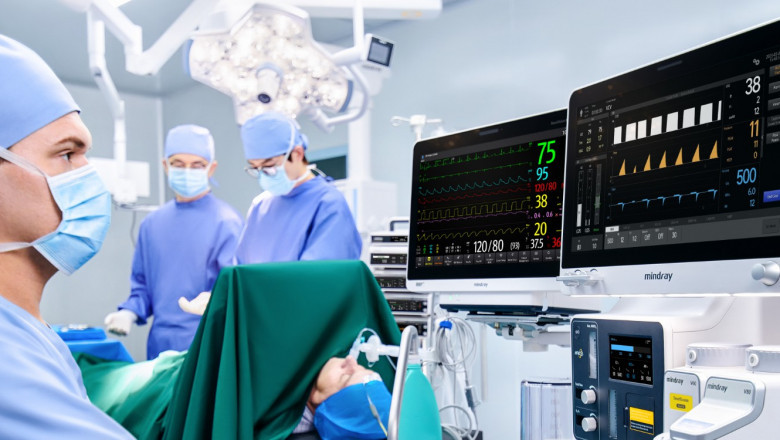views
The medical display market has experienced significant growth over the past few years, driven by the increasing demand for advanced diagnostic tools, surgical navigation systems, and growing awareness of healthcare solutions. Medical displays are specialized monitors designed to provide high-resolution imaging for use in medical environments. They play a critical role in enhancing the accuracy of diagnostics and improving patient outcomes across various healthcare settings, including hospitals, clinics, diagnostic centers, and surgery rooms.
Technological Advancements in Medical Displays
Technological innovations have been central to the growth of the medical display market. The transition from standard displays to high-definition (HD), ultra-high-definition (UHD), and even 8K displays has revolutionized how medical professionals view and interpret diagnostic images. The development of Organic Light Emitting Diode (OLED) and Liquid Crystal Display (LCD) technologies has played a significant role in this advancement. OLED displays, for example, offer superior contrast ratios, improved color reproduction, and faster response times, which is vital in clinical imaging and surgery. LCDs are popular for medical imaging because of their high resolution and wide viewing angles, making them ideal for medical professionals who need to assess critical patient information in real time.
Furthermore, the integration of Artificial Intelligence (AI) and machine learning with medical displays is becoming a significant trend. These technologies can help radiologists and other healthcare professionals identify patterns in medical images such as X-rays, MRIs, and CT scans more quickly and accurately. AI-powered displays can also highlight areas of concern in medical images, enhancing diagnostic accuracy and helping doctors make better-informed decisions.
The Role of Medical Displays in Healthcare Environments
Medical displays are essential tools in numerous healthcare applications, ranging from diagnostic imaging to real-time monitoring during surgeries. For example, in radiology departments, high-resolution displays are used to view X-rays, CT scans, MRIs, and other medical images. These displays enable doctors to detect even the smallest anomalies, allowing them to diagnose conditions such as cancers, fractures, and neurological disorders with greater precision.
In operating rooms, medical displays are crucial in providing surgeons with real-time visuals of the patient's internal condition. These displays can integrate with other medical technologies such as endoscopic systems, surgical navigation tools, and robotic surgery systems. Surgeons rely on accurate visual information for precise procedures, which can significantly improve patient outcomes and reduce the risk of complications.
Furthermore, advancements in touch-sensitive displays have also enhanced the usability of medical displays. Touchscreen technology enables healthcare professionals to interact with patient data, zoom into images, and manipulate diagnostic tools with greater efficiency, streamlining workflows in medical settings.
Market Growth and Future Prospects
The medical display market is projected to continue growing at a steady pace in the coming years. This growth is primarily fueled by the expanding healthcare sector, rising demand for minimally invasive procedures, and advancements in imaging technology. Furthermore, as the global population continues to age, the demand for healthcare services, including diagnostic imaging, will increase. The COVID-19 pandemic has also accelerated the adoption of telemedicine and remote diagnostics, further boosting the demand for high-quality medical displays.
Geographically, North America dominates the medical display market due to the region’s robust healthcare infrastructure, high adoption rates of advanced medical technologies, and significant investments in research and development. Europe and the Asia-Pacific region are also witnessing rapid growth, particularly in countries like Germany, Japan, and China, where healthcare systems are evolving, and investments in medical technology are rising.
As the market continues to evolve, manufacturers are focusing on developing displays that offer superior image quality, larger screen sizes, and better ergonomics. They are also working to improve the durability of displays, as medical displays must withstand harsh environments, constant cleaning, and prolonged use in healthcare settings.
Conclusion
The medical display market is poised for continuous growth, driven by ongoing technological advancements, a rising demand for accurate diagnostic tools, and the increasing complexity of medical procedures. As innovations such as AI, high-definition displays, and touch-sensitive technologies continue to shape the industry, medical displays will remain an indispensable component of modern healthcare, improving both the accuracy of diagnoses and the quality of patient care.






















Comments
0 comment